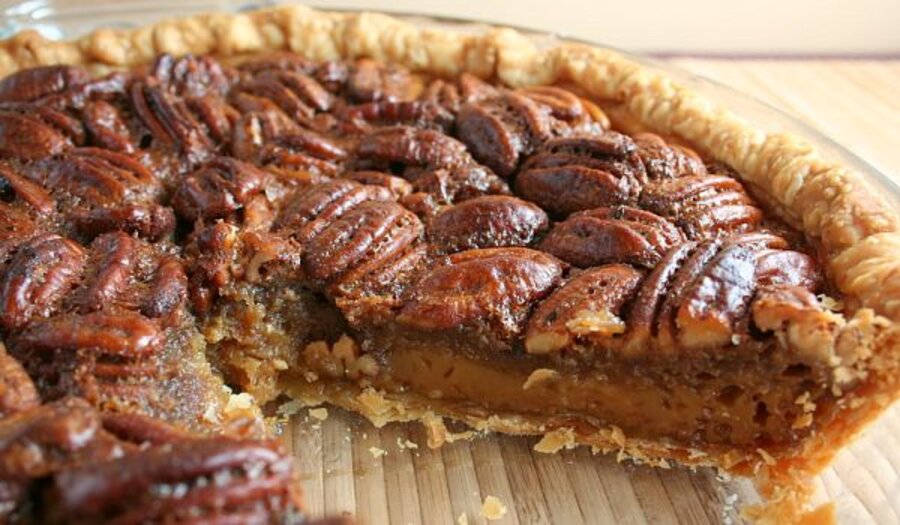By Perre Coleman Magness, The Runaway Spoon
Lightly toasting the pecans enhances the nutty flavor of the pie. I prefer dark corn syrup for a rich, deep pie, but there are those who prefer to use light. The bourbon is theoretically optional, but really? It seems to add to the Southern flavor. And I will never tell if the crust did not originate in your kitchen.
For the crust:
1-1/4 cup all-purpose flour
1/2 teaspoon salt
1/2 teaspoon sugar
8 tablespoons (1 stick) cold butter, cut into small pieces
2 to 4 tablespoons ice water
For the filling:
1 -1/2 cups pecan halves
4 large eggs
1 cup dark corn syrup
4 tablespoons melted butter, cooled to room temperature
1/2 cup sugar
1 tablespoon vanilla extract
2 tablespoons bourbon (optional)
For the crust:
1. Place the flour, salt and sugar in the bowl of a food processor and pulse a few times to mix. Drop in the small pieces of cold butter and pulse several times until the mixture is crumbly, but some minute pieces of butter are still visible. Sprinkle the water over, a tablespoon at a time, and pulse to combine. When the pastry just comes together, dump the dough onto a lightly floured surface and pat into a disk about ¾ inch thick. Wrap the disk in plastic wrap and refrigerate for at least one hour before rolling.
2. When ready to roll, place the disk on a lightly floured surface and using a floured rolling pin, roll out the pastry to a round about 14 inches in diameter, to fit a nine inch pie plate. Carefully drape the pastry over the rolling pin and transfer to the pie dish. Gently fit into the bottom and sides of the dish. Trim any overhanging pastry and lightly dust the bottom of the prepared crust with flour. Set aside.
For the filling:
1. Preheat the oven to 350 degrees F.
2. Place the pecan halves in a dry skillet and lightly toast over medium heat. Watch carefully and move the pecans around the pan with a spatula or wooden spoon. You do not want to brown the pecans, just toast them gently until you can smell a nice, nutty aroma. This will only take about five minutes. Remove the pecans from the heat and set aside.
3. In a medium bowl, whisk together the remaining ingredients until thoroughly blended. Add the pecans and stir to distribute evenly. Pour the filling into the prepared crust, pushing the nuts into the filling to make an even layer.
4. Bake the pie for 40 – 50 minutes until the center is puffed up and no longer wobbly. I recommend that you shield the edges of the crust with foil or a crust shield before the pie goes in the oven. It is hard to do when the pie is hot. Remove the cooked pie from the oven and leave to cool completely. The pie will keep wrapped tightly for two days, or can be wrapped in plastic wrap, then foil and frozen for up to six months.
Related post on Stir It Up!








